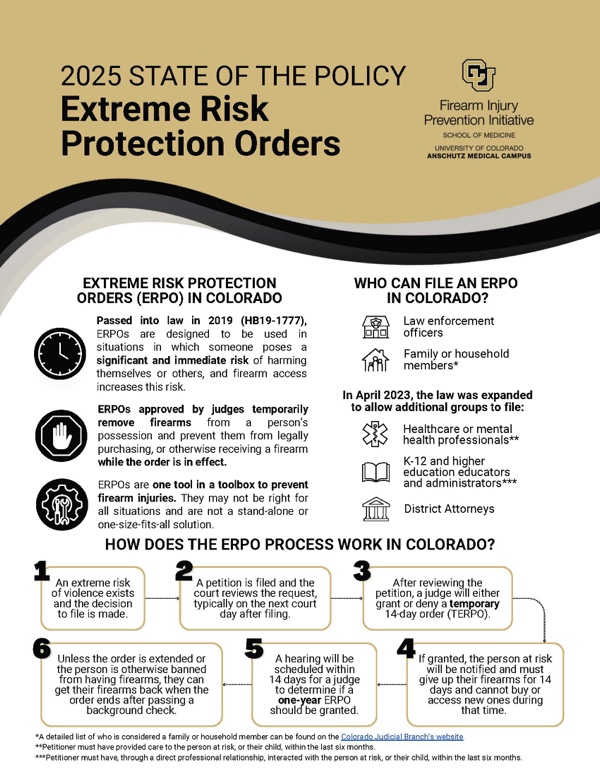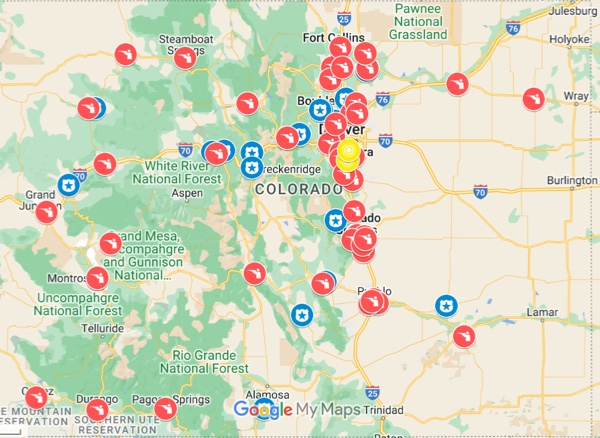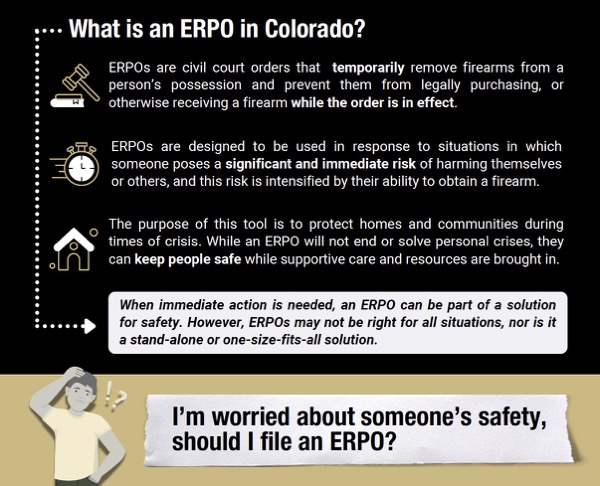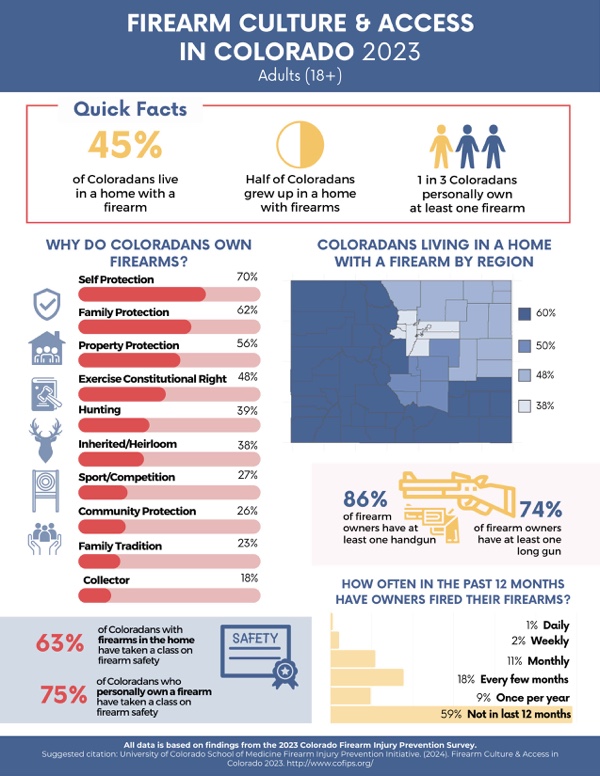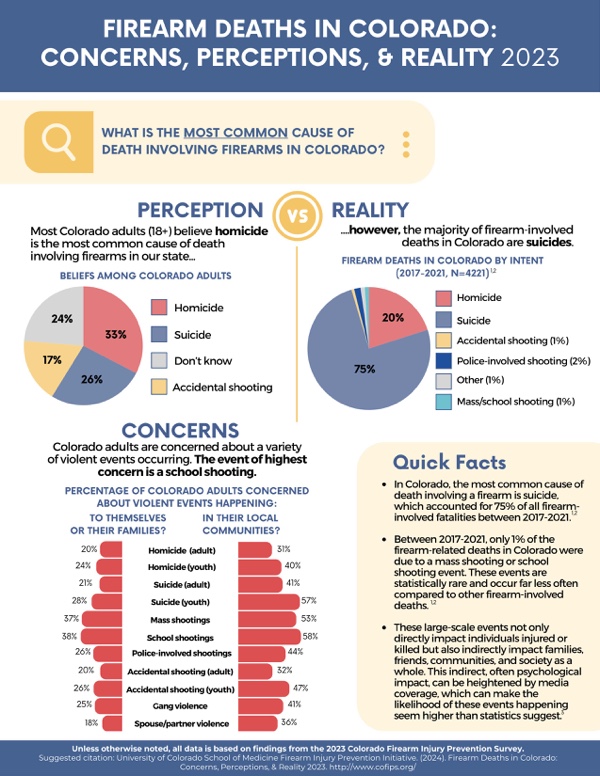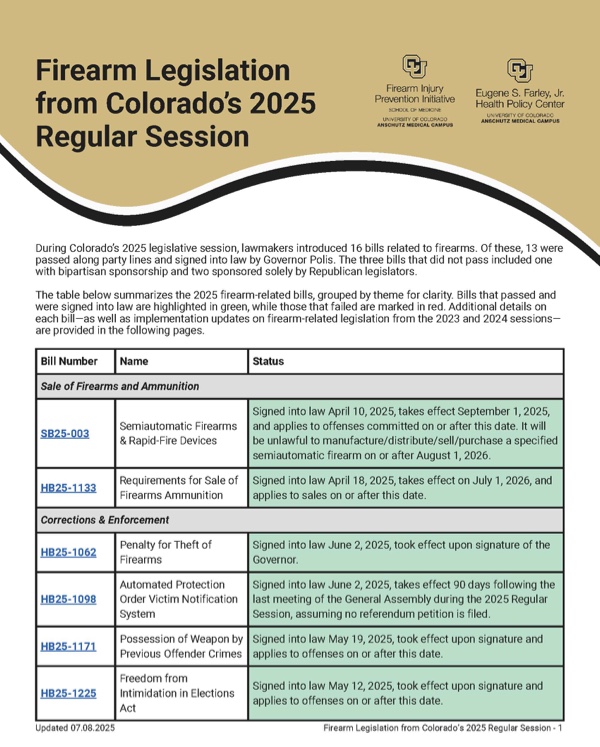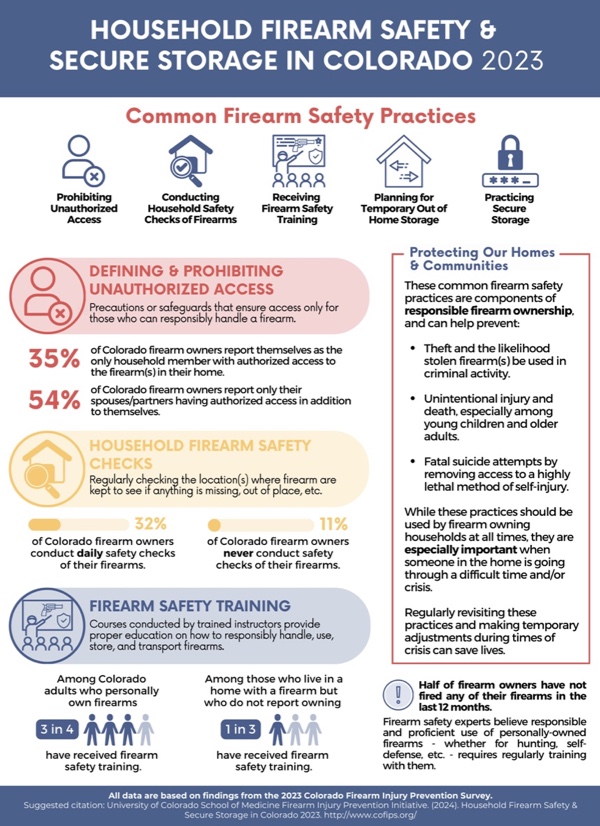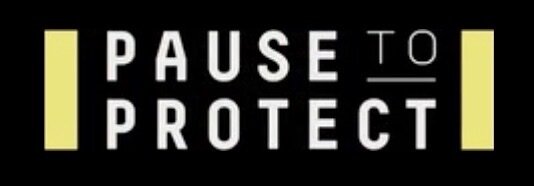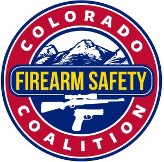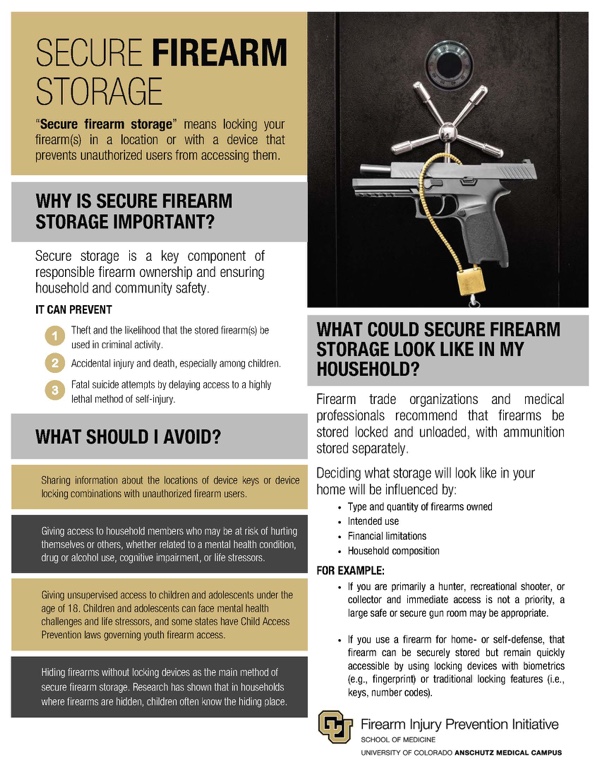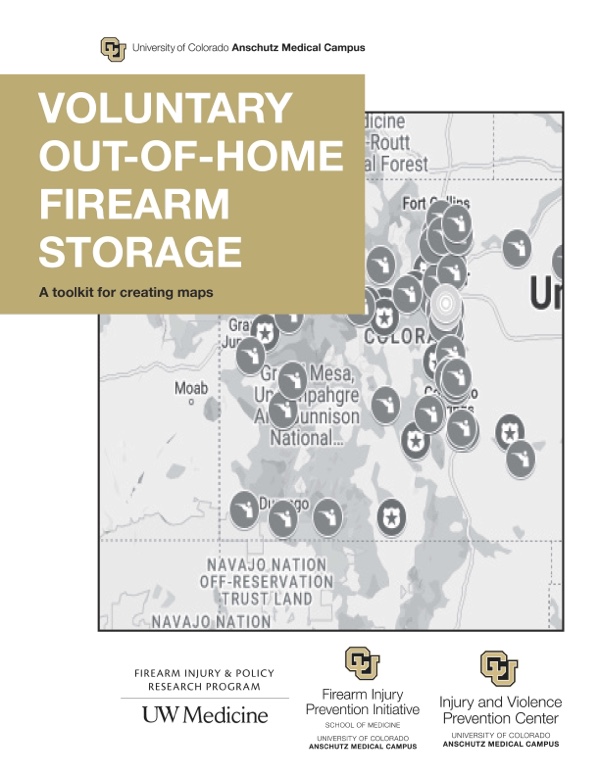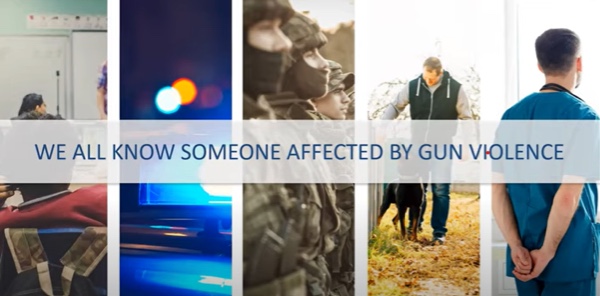Resources
2025 State of the Policy: Colorado's Safe Storage Laws
A summary of Colorado's Safe Storage of Firearms law and Secure Firearm Storage in Vehicles law, including what each law entails, how they're being implemented, Coloradans' knowledge of and views about the laws and secure storage practices, and where to access related resources.
2025 State of the Policy: Extreme Risk Protection Orders
A summary of Colorado's Extreme Risk Protection Order (ERPO) policy including what it is, how it's being implemented, Coloradan's knowledge of and views about it, and where to access related resources.
Colorado Gun Violence Prevention Resource Bank
The Colorado Gun Violence Prevention Resource Bank is a comprehensive resource for individuals and communities to understand what firearm injury and violence look like in Colorado—and to explore solutions and approaches, informed by research, that may reduce the overall burden of firearm injuries and deaths. It was created by the Colorado Department of Public Health and Environment Office of Gun Violence Prevention and research teams from the Injury & Violence Prevention Center (IVPC) in the Colorado School of Public Health.
Colorado Out-of-Home Storage Map
The Colorado Out-Of-Home Storage Map was developed to help community members seek local options for temporary, voluntary out-of-home firearm storage.
The listed business and law enforcement agencies can be contacted for further information.
Extreme Risk Protection Orders in Colorado Tool
Extreme Risk Protection Orders (ERPOs), sometimes called “red flag laws”, can be part of a solution to protect people from an urgent or imminent risk of firearm-related harm or death. However, they may not be the right solution for all situations. This resource outlines solutions that can be considered before or alongside filing for an ERPO and provides information on their use in Colorado.
Currently available in English.
Firearm Culture & Access in Colorado 2023 Data Brief
A summary of firearm culture & access data from the 2023 Colorado Firearm Injury Prevention Survey (COFIPS). Available via the COFIPS website.
Firearm Deaths in Colorado: Concerns, Perceptions, & Reality 2023 Data Brief
A summary of firearm injuries and deaths in Colorado from the 2023 Colorado Firearm Injury Prevention Survey (COFIPS). Available via the COFIPS website.
Firearm Legislation from Colorado's 2025 Regular Session
A summary of the firearm-related bills that were introduced, passed, and failed during Colorado’s 2025 legislative session as well as brief implementation updates for bills passed into law in the 2023 and 2024 legislative sessions. Created in partnership with the University of Colorado Eugene S. Farley, Jr. Health Policy Center.
Firearm Responsibility and Planning: Creating a Firearm Life Plan
The Firearm Life Plan is an easy-to-use toolkit to facilitate conversations about firearms, aging, and planning for the future together.
Household Firearm Safety & Secure Storage in Colorado 2023 Data Brief
A summary of responsible firearm ownership behaviors in Colorado from the 2023 Colorado Firearm Injury Prevention Survey (COFIPS).
Available via the COFIPS website.
Lock to Live: A Firearm & Medication Safe Storage Decision Aid
This firearm and medication safe storage decision aid tool helps users make decisions about temporarily reducing access to potentially dangerous things, like firearms, medicines, sharp objects, or other household items during times of crisis. The use of Lock to Live supports users and their families in identifying options for secure storage that fit their personal needs.
Pause to Protect - A New Way for Firearm Businesses to Prevent Firearm Injury or Death
Pause to Protect offers an online hub of materials and resources for firearm businesses and owners interested in protecting themselves and their communities. Developed by a multi-disciplinary team of experts based at the University of Colorado Anschutz Medical Campus with funding from the U.S. Department of Defense's Defense Suicide Prevention Office and USAA's Face the Fight Foundation, Pause to Protect’s goal is to empower firearm businesses and owners to take easy steps to help prevent accidents, theft, suicide, and other violence involving personally-owned firearms.
Resources available include:
- A national map of locations, including firearm businesses and law enforcement agencies, willing to consider community requests for temporary, voluntary firearm storage.
- Examples of tested operating procedures for businesses interested in offering temporary on-site storage to customers.
- Business and insurance considerations for businesses interested in facilitating the distribution of storage devices.
- Guidance for business operators and staff on how to talk to customers about safe storage.
Resources for Firearm Safety Training in Colorado
Approximately 30% of people in the U.S. own a firearm, making safe firearms ownership a priority. Review resources for firearm safety training the Colorado Firearm Safety Coalition believes everyone who chooses to own firearms should be familiar with.
Secure Storage Fact Sheet
Secure firearm storage is a critical component of responsible firearm ownership and entails locking firearm(s) in a location or with a device that prevents unauthorized users from accessing them.
This fact sheet identifies the rationale and various ways firearms can be safely stored.
Support for Upstream Violence Prevention Solutions Data Brief
A summary of support for upstream violence prevention solutions from the 2023 Colorado Firearm Injury Prevention Survey (COFIPS). Available via the COFIPS website.
Video Tutorial: How to Use Common Firearm Locking Devices
Secure firearm storage devices prevent misuse, unauthorized user access, theft, and tampering when used correctly. In this video, FIPI Partnership & Collaboration Coordinator Matt Wetenkamp demonstrates how to use a variety of secure storage firearm devices, such as trigger locks, cable locks, and locking gun safes— locking, biometric, combination, and quick-release-- on a variety of firearms, including a revolver, handgun, and rifle.
Voluntary Out-of-Home Firearm Storage: A Toolkit for Creating Maps
This voluntary out-of-home firearm storage toolkit for creating maps toolkit provides practical information about voluntary, temporary firearm storage and the rationale for offering this type of storage and logistics in developing a storage program or a map of storage options.
The toolkit includes information on how to find storage suppliers, common concerns, and step-by-step instructions for building a firearm storage map. It is designed to support community organizations, community coalitions, injury or suicide prevention organizations, academic programs focusing on injury/suicide prevention, and other groups that are seeking to promote voluntary, temporary firearm storage.
Webinar: Talking About Firearm Injury and Gun Violence
Talking about firearms and firearm injury prevention can be difficult, and the language we use in health conversations matters. Mutual understanding of language can help clinicians, researchers, and the public better work together to prevent firearm injuries and deaths. This Talking About Firearm Injury and Gun Violence webinar brings together a diverse panel of experts to discuss best practices and considerations for engaging in these conversations.

FIPI Webinar Series
Our webinar series highlights collaborative, innovative approaches to firearm injury prevention happening in communities across the country. We hope these sessions can facilitate discussions, spread awareness, and build inter- and multi-disciplinary networks.
.jpg?sfvrsn=9589c5b4_1)
